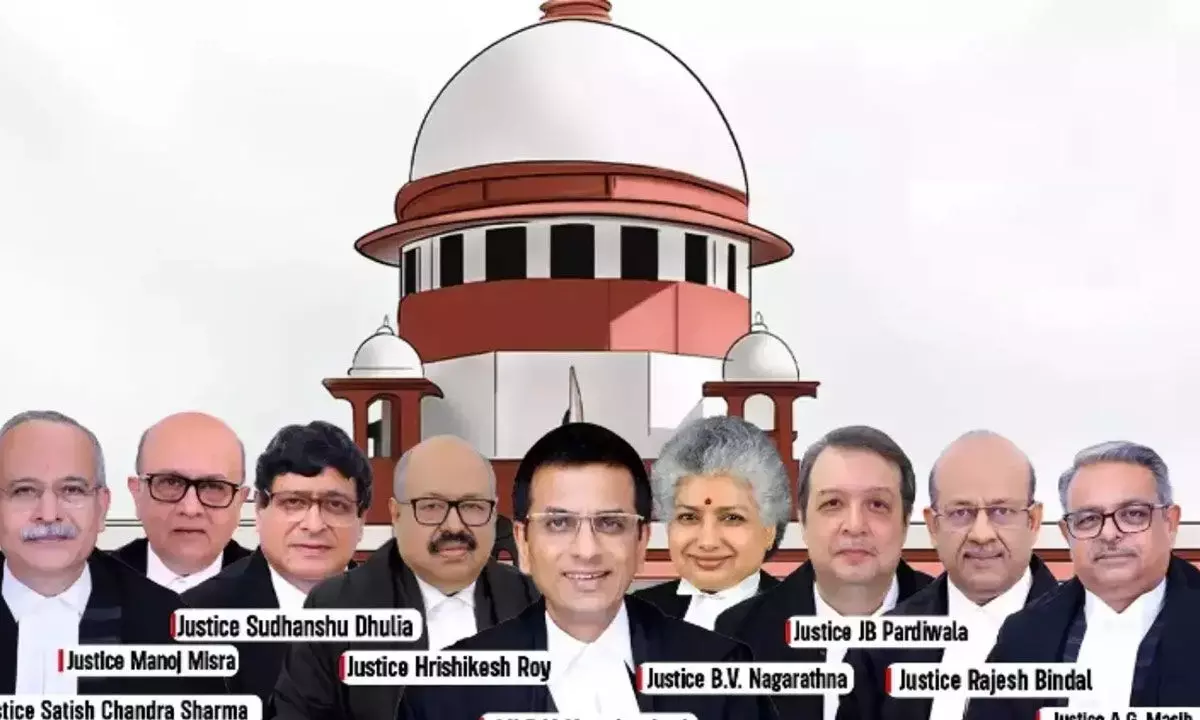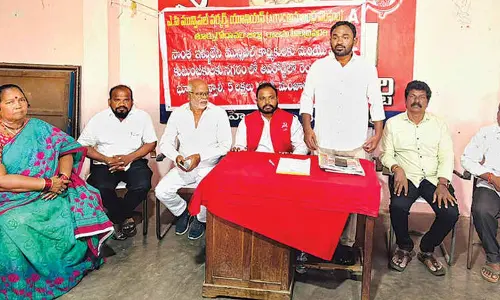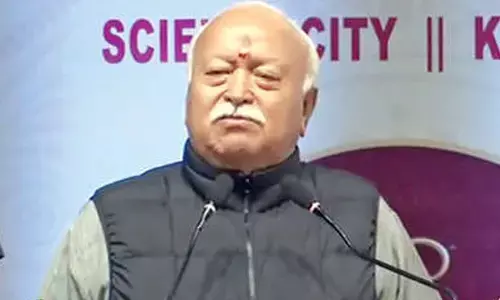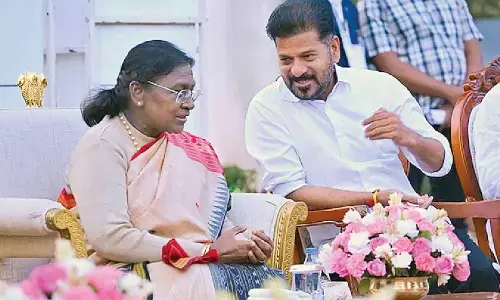'Not every private property can be acquired by state'

All private property is not 'material resource of community': SC
New Delhi: A nine-judge constitution bench of the Supreme Court on Tuesday ruled that the state can't classify every privately owned property as a “material resource of the community”.
The Apex court, by a majority of 7:2, held that some private properties may come under Article 39(b) provided they meet the qualifiers of being a 'material resource' and 'of the community'.
The Constitution bench comprised Chief Justice of India DY Chandrachud, Justices Hrishikesh Roy, B.V. Nagarathna, Sudhanshu Dhulia, JB Pardiwala, Manoj Misra, Rajesh Bindal, Satish Chandra Sharma and Augustine George Masih. The majority opinion was authored by the CJI, while Justice BV Nagarathna partially concurred and Justice Dhulia dissented.
The majority disagreed with the view expressed by Justice Krishna Iyer in State of Karnataka v. Ranganatha Reddy (1978) 1 SCR 641 that private properties can be regarded as community resources. Also, the judgment in Sanjeev Coke Manufacturing Company vs. Bharat Coking Coal Ltd. and Anr. (1983) 1 SCR 1000 which endorsed Justice Iyer's view was held to be erroneous.
“The direct question referred to this bench is whether the phrase ‘material resources of the community’ used in Article 39(b) includes privately owned resources. Theoretically, the answer is yes, the phrase may include privately owned resources. However, this Court is unable to subscribe to the expansive view adopted in the minority judgement authored by Justice Krishna Iyer in Ranganatha Reddy and subsequently relied on by this Court in Sanjeev Coke. Not every resource owned by an individual can be considered a ‘material resource of the community’ merely because it meets the qualifier of ‘material needs’,” the majority judgment written by CJI Chandrachud held.
The single sentence observation in Mafatlal to the effect that “material resources of the community” include privately owned resources is not part of the ratio decidendi of the judgment and was not binding on the Court.
The enquiry on whether a resource falls within the ambit of “material resource of community” must be based on the nature of the resource, the characteristics of the resource, the impact of the resource on the well-being of the community, the scarcity of the resource, and the consequence of such a resource being concentrated in the hands of private players. The public trust doctrine can also be applied here.
There are various forms of resources, which may be privately owned, and inherently have a bearing on ecology and/or the well-being of the community. Such resources fall within the net of Article 39(b). To illustrate, non- exhaustively, there may exist private ownership of forests, ponds, fragile areas, wetlands and resource-bearing lands. Similarly, resources like spectrum, airwaves, natural gas, mines and minerals, which are scarce and finite, may sometimes be within private control.
The term ‘distribution’ has a wide connotation. The various forms of distribution which can be adopted by the State can include vesting of the concerned resource in the State or nationalisation.
The majority judgment also observed that the views expressed by Justice Krishna Iyer and Chinnappa Reddy were rooted in a particular economic ideology. The majority observed that the framers of the Constitution did not intend to bind the country with any specific economic dogma.
The bench also unanimously held that Article 31C to the extent it was upheld in Kesavanda Bharati remains in force.
Justice Nagarathna’s views
“Material resources” can in the first instance be divided into two basic categories, namely, (i) State owned resources which belong to the State which are essentially material resources of the community, held in public trust by the State; and (ii) privately owned resources. However, the expression “material resources” does not include “personal effects” or “personal belonging” of individuals, such as, clothing or apparel, household articles, personal jewellery and other articles of daily use belonging to the individuals of a household and which are intimate and personal in nature and use. Excluding “personal effects”, all other privately owned resources can be construed as “material resources”.
Thus, all resources whether they are public resources or privately owned resources which come within the scope and ambit of the expression “material resources” as stated above are included within that expression.
Private resources can be turned into material resources of the community by means such as (1) nationalisation; (2) acquisition; (3) operation of law; (4) by purchase by state; (5) owner’s donation.
The “material resources of the community” have to be “distributed as best to subserve the common good”. Distribution could be in two ways:
Firstly, by the State itself retaining the material resource for a public purpose and/or for public use; and secondly, privately owned material resources when converted as “material resources of the community” can be distributed to eligible and deserving persons either by way of auction, grant, assignment, allocation, lease, sale or any other mode of transfer known to law either temporarily or permanently depending upon the mode adopted and unconditionally or with conditions.
On merits it cannot be held that Sanjeev Coke violated judicial discipline. One cannot lose sight of the fact that in Sanjeev Coke this Court did not decide the case only on the basis of the opinion of Krishna Iyer, J. in Ranganatha Reddy but on merits on the validity of the Nationalisation Act. Therefore, Sanjeev Coke is good law insofar as on the merits of the matter is concerned.
Privately owned resources except “personal effects” as explained above can come within the scope and ambit of the phrase “material resources of the community” provided such resources get transformed as “resources of the community” as discussed by me above. To reiterate, it would not include personal effects.
Justice Dhulia’s views
The incorporation of Article 38 as well as Article 39(b) and (c) in Part IV of our Constitution was based on the prevalent philosophy of the time and the path of development India chose to follow. The interpretation given to the above provisions by this Court, particularly in Ranganatha Reddy and Sanjeev Coke also has its contextual relevance. Perhaps in some ways situations have changed. What has not changed, however, is the inequality. There is today a political equality and there is also an equality in law, yet the social and economic inequalities continue as cautioned by Dr. Ambedkar in his speech in the constituent Assembly on November 25, 194986.
The inequality in income and wealth and the growing gap between the rich and the poor is still enormous. It will therefore not be prudent to abandon the principles on which Articles 38 and 39 are based and on which stands the Three Judge opinion in Ranganatha Reddy and the unanimous verdict in Sanjeev Coke.
The broad and inclusive meaning given to the expression “material resources of the community” by Justice Krishna Iyer and Justice O. Chinnappa Reddy in Ranganatha Reddy and Sanjeev Coke respectively has stood us in good stead and has lost none of its relevance, or jurisprudential value, nor has it lost the audience which appreciates these values.


















